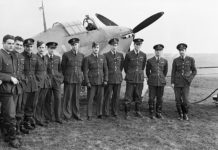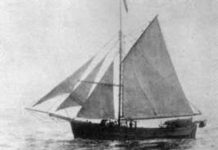
In magazine racks at checkouts, on coffee tables at dentist and doctor offices, in all sorts of waiting rooms, the covers of Reader’s Digest call out to be read. Slipped into mailboxes around the world and into the hands of avid fans, the small magazine brings information, stories of triumph, and entertainment. Produced in their home and sent to a printer, Lila and Dewitt Wallace published the first issue of Reader’s Digest nearly 96 years ago.
On Christmas Day 1889, Lila Bell Acheson was born in Virden, Manitoba. Acheson was “the third of five children of the Reverend T. Davis Acheson and the former Mary Huston,” according to the Wallace Brochure of the New York Community Trust. “Her father, a Presbyterian minister, soon moved his family to the United States and brought them up in a small Midwest town.”
Lila Bell Acheson Promoted Programs for WWI Women
Completing high school, Acheson attended the University of Oregon, graduating with a Bachelor of Arts Degree in two and a half years, instead of the usual four. Teaching high school in Oregon, she also managed a Puget Sound YWCA summer home. The era was World War One, with women working long hours in factories. The YWCA sent Acheson eastward to help ease the women’s difficult working conditions. “At a large munitions plant in Pompton, New Jersey, she helped create a social centre,” noted the New York Community Trust, and “for the first time, hot meals were served to night-shift workers.”
Meanwhile, Acheson had been corresponding with Dewitt Wallace, a college friend of her brother, Barclay. They met again while Acheson was working in New York, and before long, they were ready for a life together. With Barclay Acheson officiating (following his father’s steps, Barclay became a Presbyterian minister), Acheson and Dewitt were married in Pleasantville, New York on October 15, 1921.
Dewitt Wallace a Young Entrepreneur
Dewitt Wallace was determined to create a future in publishing. Born William Roy Dewitt Wallace on November 12, 1889, he was one of seven children. Their father was a professor and dean at the University of Macalester College in St. Paul, Minnesota. Dewitt Wallace spent several years in different colleges but did not receive a degree. Working for Webb publishing, the young man was interested in condensing trade information into usable format, and thought that the public would also enjoy condensed versions of articles. His plans were put on hold by WW I, after he enlisted for overseas duty in 1917. Wounded by shrapnel in battle, Wallace used his recovery time in hospital to condense magazine stories. Returning to the United States in 1919, he got to work, and time passed.
Book of Condensed Articles Rebuffed by Publishers
Taking his ideas to publishers, Wallace was rebuffed. His bride encouraged him to persist. “Unable to sell their ideas of a volume of condensed magazine articles to publishers, DeWitt and Lila Wallace did it themselves,” said Lillian Ruiz and Rupali Arora in CNN Money’s “50 Most Powerful Women 2007.”
Choosing articles and pieces to condense, the Wallaces initially edited and wrote out the adapted articles by hand at their kitchen table. With Dewitt performing editorial duties and Lila taking care of the business side, they also arranged for publishers’ permissions to make the article changes. Using Dewitt Wallace’s sales skills and knack for personalized direct mailings, the pair was able to raise $5,000 from 1,500 one-year subscriptions, even before the first issue was published. Borrowing another $1,300, five thousand copies of the Reader’s Digest were printed, with no advertising in its pages, no illustrations, and no colour. On February 5, 1922, the innovative magazine was mailed out to waiting subscribers.
Kitchen Table to Multi-faceted Company
The Wallaces didn’t look back. Reader’s Digest grew from a kitchen-table enterprise into a multi-faceted, multi-billion dollar company. Subscriptions multiplied. By 1939, the engaging magazine had 3 million subscribers. Today, Reader’s Digest is printed in 50 editions in 21 languages around the globe. With 130 million people for its customer base, it claims to be the largest-circulation magazine in the world.
Philanthropy began early for the Wallaces, starting with trust funds for family members. The Wallace Foundation was established in the 1950s, progressing into two divisions, Dewitt Wallace-Reader’s Digest Fund and Lila Wallace-Reader’s Digest Fund. “Together, these philanthropies provided nearly $2 billion in support to a wide variety of artistic cultural and educational causes,” noted the Wallace Foundation. The two funds merged again in 2003.
Lila Wallace a Devoted Philanthropist
The arts were Lila Wallace’s passion and she gave generously. Along with supporting the Metropolitan Museum of Art, she funded Lincoln Center chairs “at the Metropolitan Opera, the New York Philharmonic, and the Chamber Music Society,” said the New York Community Trust, plus New York City’s Ballet and Opera. Her philanthropy extended to the animal world, too. Wallace donated $5 million to the New York Zoological Society for construction of “World of Birds.” Recognized for generosity, President Richard Nixon honoured the Wallaces with the Presidential Medal of Freedom in 1972. The Wallaces withdrew from day-to-day operation of Reader’s Digest in 1973. Lila was presented another prestigious award in 1992, the National Medal of Arts.
An unusual aspect of Wallace’s fascinating life was her participation in the railway. A director of the New York Central Railroad from 1954 to 1959, she was the first woman to hold a railway director post in the United States.
Lila Bell Acheson Wallace died of heart failure at her home on May 8, 1984. She was 94 years of age. Her beloved husband of 60 years, Dewitt had died three years earlier. The Canadian co-founder of Reader’s Digest, Lila Wallace made enormous contributions to culture and was an inspiration to many.
Sources:
- Wallace Brochure, New York Community Trust (Includes a wonderful selection of photos.)
- Ruiz, Lillian, Arora, Rupali, “50 Most Powerful Women 2007,” CNN Money
- The Wallace Foundation
- Reader’s Digest Magazine Canada






